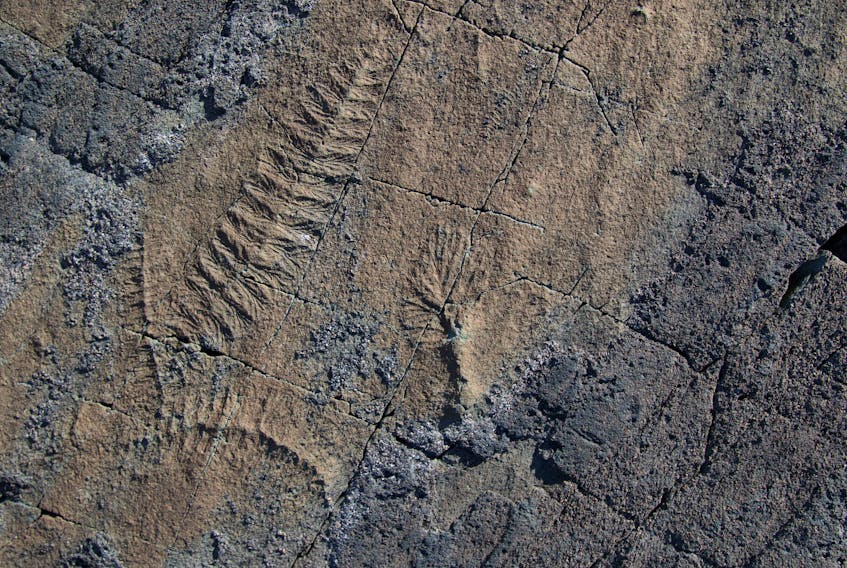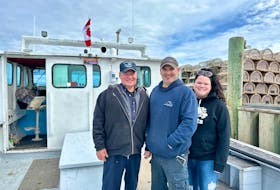A paper published by Charlotte Kenchington of Memorial University and Emily Mitchell of Cambridge University in the June 25 issue of the journal “Nature Ecology and Evolution,” sheds new light on Ediacaran fossils from Mistaken Point in Southeastern Newfoundland.
Kenchington is a post-doctoral fellow in MUN’s department of earth sciences, faculty of science.
During the Ediacaran period – 635 million to 541 million years ago – the first large, complex organisms appeared, some of which, specifically rangeomorphs, grew up to two metres in size. These organisms are some of the first complex organisms on earth, and despite their fern-like appearance, possibly the first animals to exist.

Mistaken Point is home to one of the richest and oldest Ediacaran fossil sites in the world.
Previously it was hypothesized, as is known to be the case in modern environments, that intense competition between organisms for resources such as food resulted in growth to gain an advantage over the competition.
“We wanted to know whether there were similar drivers for organisms during the Ediacaran period,” Mitchell said.
“Did life on Earth get big as a result of competition?”
Related story:
Five things to know about Mistaken Point Ecological Reserve
The researchers found that Ediacaran oceans had very little competition for nutrients, indicating that this sudden growth was likely not the result of inter-species competition over food.
“If they were competing for nutrients, we’d expect the organisms to be tiered,” Kenchington said.
“What we see instead is that being taller allowed their offspring to travel further distances from the parent. So, we think that reproduction was the main reason life got big when it did.”
Tiering is a process in which different organisms occupy different parts of the water column to avoid competing for resources, something which was not found to be the case with the Ediacaran organisms at Mistaken Point.
Being immobile, Ediacaran organisms were fossilized where they lived making it possible to analyze whole populations.
In present day environments, predation has a major impact on communities of organisms, which was not the case in the Ediacaran period. The lack of macro-predation and intense competition simplified community dynamics, leaving space and availability of food resources as the only major limitations on population growth of an individual species.
Based on their spatial analysis, Kenchington and Mitchell hypothesize Ediacaran organisms acted like colonizers in their given area. The taller stems, aided by an increase in ocean oxygenation during this period, enabled a greater dispersion of offspring. The tallest organisms were surrounded by the largest cluster of offspring helping to further their conclusion that greater height was not related to food competition.
“While taller organisms would have been in faster-flowing water, the lack of tiering within these communities shows that their height didn’t give them any distinct advantages in terms of nutrient uptake,” Mitchell said.
“Instead, reproduction appears to have been the main reason that life on Earth got big.”









